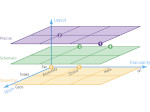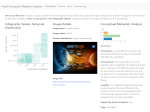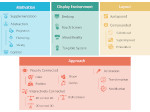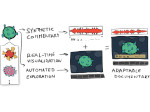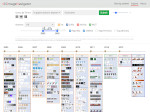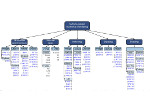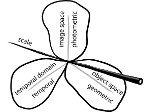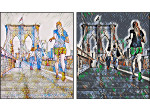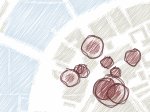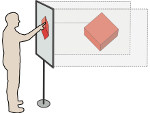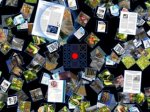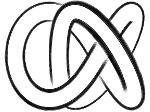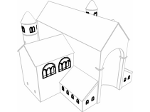Visual Abstraction
Description:

I have contributed to a chapter in the book entitled »Foundations of Data Visualization«, edited by Min Chen, Helwig Hauser, Penny Rheingans, and Gerik Scheuermann, and published by Springer.
Chapter Abstract:
In this chapter we revisit the concept of abstraction as it is used in visualization and put it on a solid formal footing. While the term abstraction is utilized in many scientific disciplines, arts, as well as everyday life, visualization inherits the notion of data abstraction or class abstraction from computer science, topological abstraction from mathematics, and visual abstraction from arts. All these notions have a lot in common, yet there is a major discrepancy in the terminology and basic understanding about visual abstraction in the context of visualization. We thus root the notion of abstraction in the philosophy of science, clarify the basic terminology, and provide crisp definitions of visual abstraction as a process. Furthermore, we clarify how it relates to similar terms often used interchangeably in the field of visualization. Visual abstraction is characterized by a conceptual space where this process exists, by the purpose it should serve, and by the perceptual and cognitive qualities of the beholder. These characteristics can be used to control the process of visual abstraction to produce effective and informative visual representations.
Chapter download:  (8.2 MB)
(8.2 MB)
Cross-References:
This chapter is continuation and update of our discussion on visual abstraction that we had previously published in TVCG. Also see our other work on abstraction:
- Multiscale Unfolding: Illustratively Visualizing the Whole Genome at a Glance
- ScaleTrotter: illustrative visual travels across negative scales
- multiscale visualization and scale-adaptive modification of DNA nanostructures
- exploration of the brain's white matter structure through visual abstraction and multi-scale local fiber tract contraction
- a survey of illustrative visualization techniques for diffusion-weighted MRI tractography
- continuous navigation of nested abstraction levels
- illustrative molecular visualization with continuous abstraction
- depth-dependent halos: illustrative rendering of dense line data
- visual abstraction and stylization of maps
Main References:
This work was supported through the Illustrare project, funded by ANR in France and FWF in Austria.


